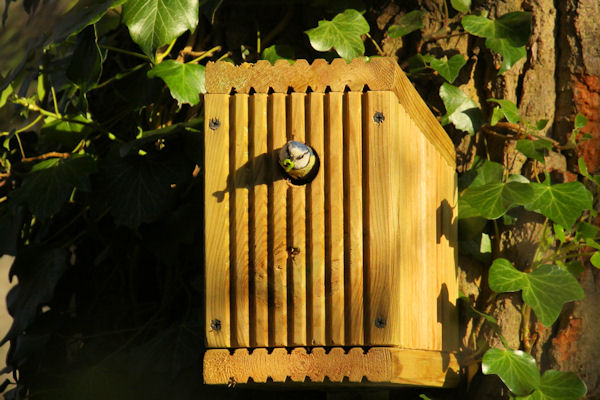June 2023 in Bicknor Wood
Warmth and moisture make excellent conditions for mildew which has been seen on oak saplings. The saplings are densely packed and the leafy canopy retains the muggy conditions that the mildew likes. Normally, mildew is quite specific and will affect only a narrow group of species, so a mildew that affects oaks would not affect, for example, a holly tree. One of the mildews that has made a leap between families is one that has transferred to oaks from mango trees. Perhaps this is mango mildew?
Woodpeckers predated on the nestboxes and damage noted on June 2nd affected 6 boxes. The Great Spotted Woodpeckers were feeding their own offspring which fledged on June 8th. The juvenile is distinctive with it's red crown.
Just a few days later, the bough that housed the nest hole fell during a storm. The bough split and revealed the nest hole.
In an earlier post, I wondered about the lack of seedheads on the Bluebells. I have not been able to come up with an adequate explanation and am still perplexed by the damped off stalks and unfertilised florets.
Enchanters' Nightshade has flowered in the deep shade of the coppicing. The patch has become larger since last year.
Unfortunately, the buffer zone on the Bicknor Wood Development was cut in the middle of June. Does anyone have any influence with the management company to leave a wider swathe of uncut flower meadow? Can we campaign to leave an uncut strip of 5 or 10 meters alongside the wood? Insects need wild flowers to feed and breed and they find good habitat in the uncut edges. What a shame it was cut.
A new species for June is the Semaphore Fly Poecilobothrus nobilitatus, seen on the ceramics adjacent to the pond.
Salad Burnet, sanguisorba major, was found in the flower meadows on the northern edge of the wood (before it was cut). It is difficult to say whether this is a species which found its own way to Bicknor Wood, or whether it came as part of a planting scheme.
I failed to mention in the May post, that Bank Swallow, Riparia riparia and Barn Swallow Hirundo rustica were reported by Anonymous eBirder. These are exciting sightings and I would be interested to collate any photos or other evidence that was collected at the time. Please contact me, Anonymous eBirder, on redgannet@gmail.com Thank you.














Comments
Post a Comment